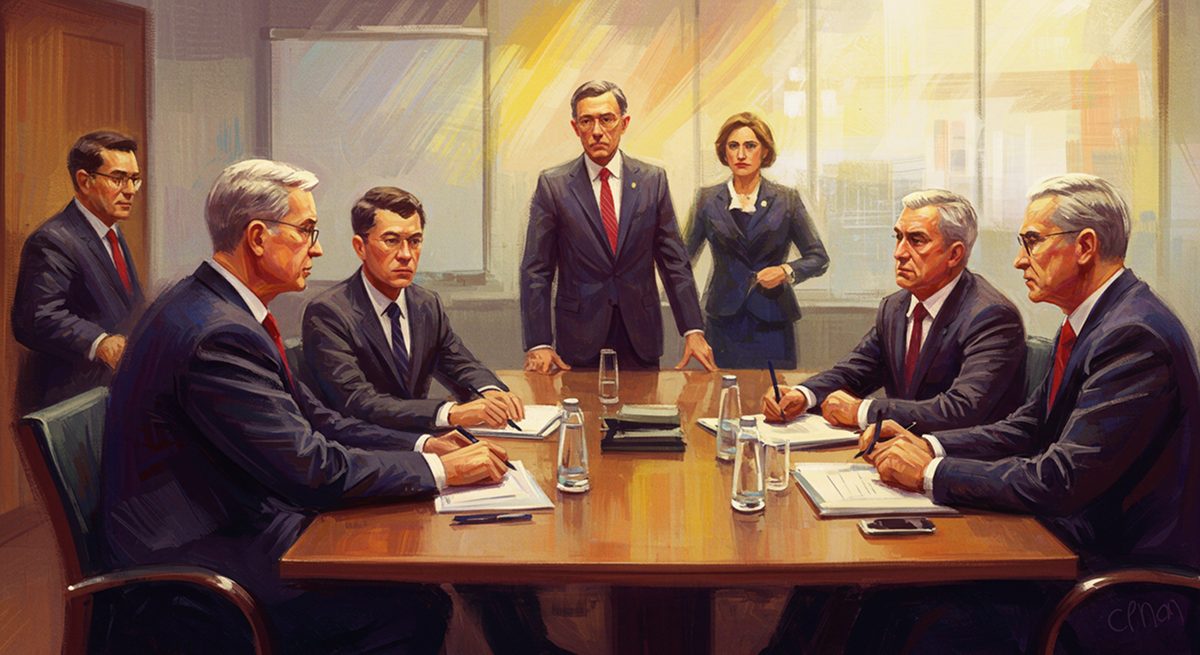All About the C-Suite
There are around 12 roles commonly associated with the chief suite and understanding these roles and the differences between them can help guide executives to the skills they need to reach the top. This level of management within a company takes responsibility for all key metrics of the company. From the organization’s marketing strategy to the average annual salary of each employee in each business unit.

What is the Chief Suite?
This is a term used to describe a collection of executive positions within the corporate world. The most common roles in the Chief Suite are the Chief Executive Officer (CEO), the Chief Financial Officer (CFO), and the Chief Technology Officer (CTO). The highest-ranking executive titles can be found in the Chief Suite, and executives in this bracket only report to other C-level executives or the board of directors.
Common C-Level Positions
Here are some top executive positions:
Chief Technology Officer (CTO)
The Chief Technology Officer is the executive responsible for the implementation and understanding of the business’s tech needs. The CTO usually runs the engineering and technology departments and controls research and development throughout the business. Because they are in the executive-level position for technology, they make all tech-related decisions for business strategies.
Chief Sustainability Officer (Chief Green Officer)
This C-level executive takes care of the environmental and sustainability responsibilities of the business. They must ensure that at least the minimum requirements are met, and if a business strives to be green, those goals must also be met.
Chief Security Officer (CSO)
The Chief Security Officer oversees all security in the company’s strategy. This encompasses digital information and the physical security of the premises and everyone on it. In some cases, the digital element is separate, where another C-level executive position might be created, such as a Chief Privacy Officer (CPO) or Chief Information Security Officer (CISO).
Chief Product Officer
These C-level executives are in charge of all product development teams, and their position is close to the product management and design roles. They also take care of testing of new products.

Chief Operating Officer (COO)
The Chief Operating Officer takes care of all of the operational parts of the company. This means that the Chief Operating Officer COO is in charge of implementing business strategies and making sure that each business strategy is run smoothly, administration, and staffing. The Chief Operating Officer COO is sometimes referred to as the Executive Vice President.
Chief Knowledge Officer (CKO)
The Chief Knowledge Office (CKO) managed all the knowledge of the business. Institutional knowledge across departments is preserved and identified regularly, and the CKO takes care of these processes.
Chief Technology Innovation Officer
The CTIO keeps the company up to date within the market and makes sure that new market trends are met so that the consumer base gets the modern products and services they expect.
Chief Information Officer (CIO)
The Chief Information Officer takes care of the information technology in the business. Anything related to technology and integration of technology-related processes is handled by the CIO.
Chief Marketing Officer (CMO)
The Chief Marketing Officer holds the top marketing position in the business. They develop the business brand and make sure that the brand is taken care of. The Chief Marketing Officer also takes care of the marketing team. Brand awareness is their primary goal.
Chief Legal Officer (CLO)
The Chief Legal Officer leads the legal department and needs to stay on top of laws and ordinances and offering legal advice to the entire business.
Chief Human Resources Officer (CHRO)
The Chief Human Resource Officer runs the HR department and oversees processes like compliance, hiring, and talent management. At times the Chief Human Resources Officer role can be combined with the Chief People Officer role.
Chief Financial Officer (CFO)
The Chief Financial Officer CFO is at the top of the finance department of the business. The Chief Financial Officer oversees data analysis, financial reports, recordkeeping, financial services, risk management duties, and financial planning. The Chief Financial Officer can also be called the Chief Financial and Operating Officer and they need to ensure that all financial aspects of the business run smoothly.
Chief Experience Officer (CXO)
The Chief Experience Officer is one of the newer roles that maintains and designs customer experience strategies.
Chief Executive Officer (CEO)
The Chief Executive Officer CEO is in charge of the entire organization. They need to ensure that the business stays on track and that the vision and mission are both honored. The Chief Executive Officer CEO takes on public-facing ventures and works closely with the board of directors. Other C-suite members also answer to the Chief Executive Officer CEO. Day-to-day operations are left to the Chief Operations Officer. Together they manage all business operations. They are often referred to as the Company President.
Chief Diversity Officer (CDO)
These senior executives work with inclusion, equity, and diversity in the business. There are compliance laws involved in this area, and it is the responsibility of the CDO to ensure that they are met.
Chief Data Officer (CDO)
The Chief Data Officer oversees all data processing software, market research, analytics, and data science. These C-suite executive positions are sometimes called the Chief Analytics Officer, however, the title of Chief Analytics Officer is quite outdated for more modern enterprises.
Chief Compliance Officer (CCO)
The Chief Compliance Officer makes sure that internal processes are adhered to and that employees are acting in line with the procedures and policies of the company.

What Are Some Essential Skills Amongst C-level Executives?
Many people in C-suite positions require the following essential skills:
Technical Skills
People in a C-level position requires a range of different technical skills. They will need to ensure that employees in their departments are using their skills effectively.
Communication and Leadership Skills
Communication is key to anyone who wants to climb the corporate ladder and join the ranks of senior managers or senior vice presidents. Leadership skills, including interpersonal skills, are necessary for good C-level executives to maintain if they want to successfully manage business strategies.
Experience
There is a lot of responsibility involved with C-suite positions. Even the ones that have not been mentioned in this life (Chief Learning Officer, Chief Procurement Officer, Chief Innovation Officer, and other C-suite officers that exist in various departments specific to individual industries). Major corporate decisions also rely on a senior executive, which calls for a lot of experience to inform instincts related to such decisions.
Education
High levels of education in related fields are essential. A business analyst must be adequately educated, and other fields, like business administration, also require suitable education. While experience is ultimately more valuable, education is essential for the foundations of experience.
Selecting Top C-Suite Executives
When it comes to selecting top-level executives for key C-Suite roles, organizations often seek the assistance of experienced headhunters, also known as executive search firms. At Keller Executive Search, we specialize in connecting companies with exceptional executive talent who possess the skills and expertise required for critical leadership positions. Our team of dedicated headhunters leverages their industry knowledge and extensive networks to identify and attract the most qualified candidates.










